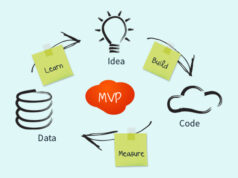A variety of factors determine the time-to-market of MVPs. But the general rule of thumb is to press for the shortest possible time frame. This helps you launch out successfully with minimal costs compared to bankrolling a payroll and other operational costs in a long-drawn MVP development.
The idea is to just get something out there in the world, and then build market momentum gradually afterward – not the other way around. It might surprise you to learn that this is the launching strategy that was used by industry heavyweights like Google, Facebook, and Twitter (the launch dates of these companies are hardly a thing, even among their most avid users).
In this dossier, we’ll help you determine the best timeframe for your launching your MVP. We’ll also show you tips to help you accelerate the product launch and also increase your chances of succeeding.
Timing Your Pre Launch

Here are a few things you can do to accelerate your pre launch developments and set the ground for a successful launch:
Talk to Your Users
Before you even begin doing anything, try talking to potential customers about your ideas. You’d be surprised to learn how many startups wind down even before they interact with their first customer.
Talking to potential customers first puts you in a much better position to succeed because you’ll get a good reality check for all the lofty ambitions you may have about your product or MVP.

Launch an MVP
There are basically two types of MVPs – lean and heavy. Most MVPs fall in the former category – sometimes a heavy MVP can be stripped down to a lean MVP. Here’s all you need to know about launching each type of MVP successfully:
Lean MVP
- Fast launch. Most MVPs can be launched within a matter of weeks. You can release your first product within a few weeks or a month.
- Focus on minimum features. Focus only on a small set of features that you can easily put out in the shortest possible time.
- Address a small primary focus group. Your MVP should address a small set of the highest-order problems of a small primary focus group. It’s ok to have grand visions but start with a narrow focus on a condensed set of problems.
Real-World Examples of Lean MVPs:
- Airbnb. Airbnb started with a very simple landing page. There were no payment processors – you had to pay the homeowners directly when you get to the location. Also, there were no maps, and the lead developer was working part-time.
- Twitch. Not many users would recognize Twitch in its early days. Twitch launched as an online reality TV show Justin.tv, chronicling the daily life of the creator, Justin. There was only just one channel, the videos were piss-poor quality, and there were no video games.
- Stripe. Formerly “Dev/payment/”, Stripe started with no bank partnerships, using a scrappy, startup-y payment processing system. There were hardly any features on the site. The founders did integrations in-person in customers’ offices. Doing that helped them market their products and also test for bugs directly on the user’s systems.
Heavy MVPs
hre
In some industries, you may not have the liberty to launch a lean MVP. Here are a few of those:
- Heavily regulated industries. You have a whole lot more hurdles to scale in industries like banking and finance, insurance, etc. that have a broad patchwork of strict regulations that you must adhere to.
- Hard tech. Obviously, it would take a long time to launch MVPs involving highly complex technologies like rockets and electric vehicles.
- Biotech. It also takes much longer to research and develop health and wellness products.
Nonetheless, in many of these instances, you can launch your MVP with a simple website that explains your solutions and ideas to pitch investors.
Hacks for Building MVPs

Here are some expedient tips that’ll help you accelerate the time-to-market of your MVPs:
- Time-box your MVPs. Set a specific timeframe for developing and releasing your MVP and stick to it no matter what.
- Cut back on your specs. Do this if you’re running out of time. Your deadline should be more important than the features – it won’t hurt if you forgo some important features to meet deadlines and get feedback fast. You might be surprised to find that those important features don’t really matter to customers after all.
- Create prototypes. Many times, developers bypass the prototype phase to build the MVP directly. The main problem with this is that it makes it difficult to track changes. With a prototype, you can compare any changes your users suggest you make with your original ideas to better understand how to pivot between the two.
- Don’t fall in love with your MVP. You should be able to let go of any ideas if they don’t appeal to your customers. Hold on to your customer’s problems tightly and the solutions loosely. You need emotional intelligence to be able to make the necessary changes needed for a successful launch.
How To Launch Out Successfully

With your MVP locked and loaded within the targeted time frame, you can then think of launching out to get feedback. Here are a few that will help you launch successfully:
Rethink Success

Not all successful launches follow the pattern of big launches that get lots of press coverage and generate lots of buzz. That wasn’t the case with industry giants like Facebook, Google, and Twitter. Launches aren’t supposed to be spectacular. The most important thing is to get customers first.
First Customer Launch VS Press Launch

Dropbox launched successfully with just three beta testers. You should target getting a few customers first. As in Dropbox’s case, what you’ll learn from them might be just what you need to build a product that millions of people will buy into.
Give Customers a Product to Play With

Your initial users must find it interesting to play around with your MVP. They’ll develop interest if they believe that they’re more likely to solve their pressing needs if they participate and provide feedback.
Iterate
Iterate as many times as necessary, focusing on how to resolve your user’s feedback and solve pressing problems. Recreate your MVP until your solution solves a problem.








